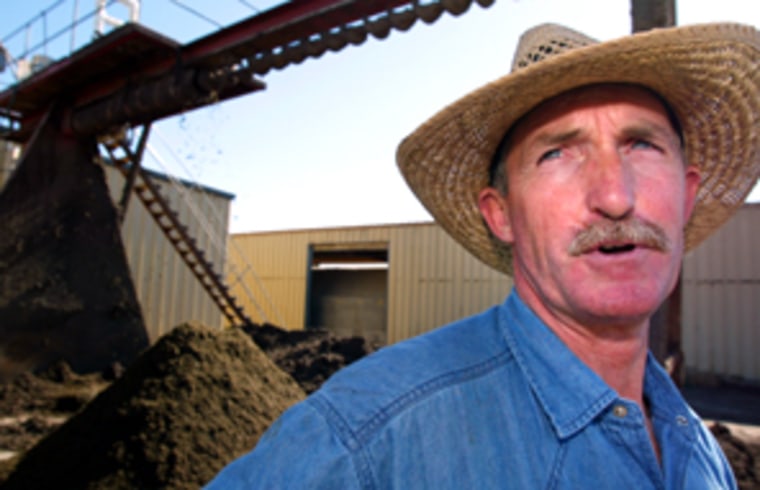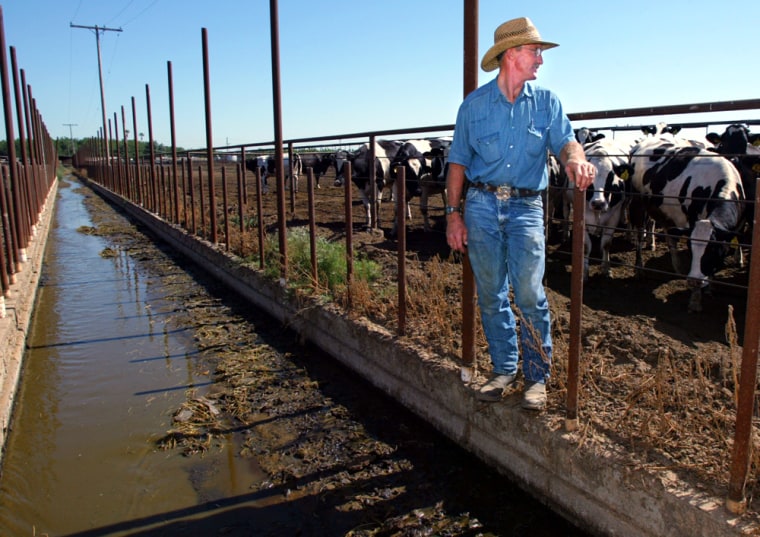More than a dozen dairies in California are building contraptions to turn one of their least-valued products — the gases that rise from decomposing manure — into one of the state’s most sought-after commodities — energy.
The state’s 1.72 million dairy cows, clustered heavily in the Central Valley, have made California the country’s top dairy state. Their milk and cream sell for more than $4 billion a year, and the industry brings jobs and tax revenue to counties with double-digit unemployment.
But according to air officials, the state’s cows also contribute about 10 percent of the chemical compounds that combine in the atmosphere to produce ozone, a principal component in the smog that plagues the San Joaquin Valley’s air.
By capturing the offending gases of dairy air, farmers are not only reducing the emissions that cloud the valley, but cutting their own electricity costs. The decidedly low-tech technology also has the potential to play a role, albeit a small one, in meeting the state’s constant hunger for new power sources.
Manure to methane to electricity
To produce energy, the farmer has to scrape up the manure, mix it with water, and pour it into a lagoon typically covered by an enormous plastic bag. When the mixture is heated, it produces methane, which is trapped by the bag, piped into a generator, and burned to create electricity.
The experiment comes a time when the agriculture industry is having to abide by air pollution regulations for the first time. By the end of the month, the local air district is expected to issue guidelines for clean-air technology that will be required in new dairies — and so-called “methane digesters” are part of the solution, officials said.

“This is probably one of the best forms of emission control from dairies,” said Dave Warner, who leads the San Joaquin Valley Air Pollution Control District’s permit program.
But what really got farmers interested, they said, was that the machines literally turn manure into money.
Ron Koetsier, who has 1,200 dairy cows on 160 acres near Visalia in Tulare County, qualified for a matching grant from the state, and since 2002 has been saving about $30,000 a year on energy costs — about half his annual bill — because he can now produce most of the energy he needs onsite.
Once his digester is hooked up to the local utility company, Koetsier said he’ll be able to bank energy with the company. When he feeds excess energy into the system, his electricity meter will run backward.
Cow power equals 2 KW a day
Methane digesters won’t produce enough energy to make a significant dent in the state’s energy demand — or even come close, experts said.
Manure from one cow can generate up to two kilowatts per day — enough to brighten two light bulbs, said Warner, and it takes a dozen cows to power an average house.
Even if all of the 65 billion pounds of manure produced in California every year went into a methane digester, the energy generated could only power a medium-sized town like Modesto.
But the other advantages — allowing farmers to save money, trapping gases and other chemicals that would have turned into harmful pollutants, and reducing the volume of animal waste — make the machines an alternative supported by environmentalists as well.
“We’ve been advocating for years the use of anaerobic digesters, or other ’cover and capture’ technology,” said Brent Newell, with the environmental advocacy group Center on Race, Poverty & the Environment. “It’s definitely beneficial.”
As of July 1, all farms and dairies that emit more than 12.5 tons per year of gases that contribute to smog had to apply for local air quality permits and pay hundreds of dollars in annual fees. For the first time, 1,350 of the largest farms and dairies in the nation’s most productive farm counties were asked to account for the air pollution they produce.
As long as cleaning the air is also economically feasible, farmers are ready to enlist in the struggle, they said.
“Yeah, it’s going to clean the air,” said Larry Castelanelli, a third-generation farmer who milks 1,500 cows near Lodi and pays an annual utilities bill that tops $100,000. “Yeah, there’s a concern there. But this is dollar driven. I’m competitive. I’m trying to survive in the dairy industry.”
